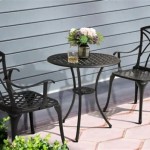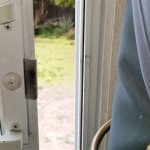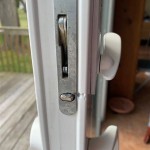How To Paint a Concrete Patio Floor
Painting a concrete patio floor is a relatively straightforward and cost-effective way to enhance its appearance, protect it from wear and tear, and even increase its lifespan. Proper preparation and the use of appropriate materials are crucial for achieving a durable and aesthetically pleasing finish. This article provides a comprehensive guide to painting a concrete patio floor, covering everything from surface preparation to the application of sealant.
Key Point One: Thorough Surface Preparation is Paramount
The success of any paint project hinges on the quality of the surface preparation. Concrete, being a porous material, can harbor dirt, grime, mildew, and existing coatings that will interfere with proper paint adhesion. Neglecting this step can lead to premature peeling, blistering, and an overall unsatisfactory result. The following steps detail the necessary procedures for preparing a concrete patio floor for painting:
1. Clearing the Area: Begin by removing all furniture, planters, grills, and any other items from the patio. This includes clearing any debris such as leaves, twigs, and larger objects. A clear, unobstructed surface allows for easier and more efficient cleaning and preparation.
2. Initial Cleaning: Use a broom, preferably a stiff-bristled push broom, to sweep away loose dirt, dust, and debris from the entire surface. Pay close attention to corners and crevices where dirt tends to accumulate. This initial sweeping will remove the bulk of the surface contaminants.
3. Deep Cleaning with a Concrete Cleaner: Concrete, by its nature, can absorb grease, oil, and other stains. Use a dedicated concrete cleaner or degreaser, following the manufacturer's instructions closely. These cleaners are formulated to penetrate the concrete's pores and lift out embedded contaminants. Apply the cleaner evenly across the surface, allowing it to dwell for the recommended time. A scrub brush, particularly on heavily soiled areas, will aid in loosening stubborn dirt.
4. Pressure Washing: A pressure washer is an indispensable tool for thoroughly cleaning a concrete patio floor. Use a pressure washer with a suitable nozzle (typically a 25-degree or 40-degree nozzle to avoid damaging the concrete) and maintain a consistent distance from the surface. Work methodically, overlapping each pass to ensure complete coverage. Rinse away all traces of the concrete cleaner and any loosened debris. Pressure washing removes not only residual dirt and grime but also etches the surface slightly, which improves paint adhesion.
5. Addressing Stains: If the patio floor has stubborn stains, such as oil or rust, specific treatments may be necessary. For oil stains, consider using an oil-absorbing compound, following the product's instructions. For rust stains, a rust remover specifically designed for concrete can be applied. Always test these treatments in an inconspicuous area first to ensure they do not discolor or damage the concrete.
6. Repairing Cracks and Damage: Inspect the concrete for cracks, chips, or other damage. Small cracks can be filled with a concrete patching compound. Larger cracks may require a more substantial repair using a concrete crack filler or epoxy. Follow the manufacturer's instructions for application and curing times. Allow the patching compound to fully cure before proceeding with the painting process. Grind down any excess patching material to create a smooth, even surface.
7. Etching (If Necessary): If the concrete is particularly smooth or has been previously sealed, etching may be necessary to improve paint adhesion. Etching involves applying a mild acid solution (such as muriatic acid diluted with water) to the surface. This creates a slightly rough texture, providing a better grip for the paint. Follow the manufacturer's instructions for the etching solution carefully, and always wear appropriate safety gear, including gloves, eye protection, and a respirator. Neutralize the acid after the etching process with a solution of baking soda and water, and rinse thoroughly with clean water.
8. Drying Time: Allow the concrete patio floor to dry completely before proceeding with painting. This may take several days, depending on the weather conditions and the porosity of the concrete. Use a moisture meter to ensure the concrete is sufficiently dry. The concrete should have a moisture content below the level recommended by the paint manufacturer to ensure proper adhesion.
Key Point Two: Selecting the Right Paint and Tools
Choosing the correct paint and tools is vitally important for achieving a durable and visually appealing result. Not all paints are created equal, and selecting a product designed for concrete floors exposed to outdoor elements is essential. The following considerations should guide the selection process:
1. Paint Type: The most common and generally recommended paint types for concrete patio floors are:
- Acrylic Latex Paint: These paints are durable, water-resistant, and relatively easy to apply. They offer good adhesion to concrete and are available in a wide range of colors and finishes. Look for acrylic latex paints specifically formulated for concrete floors or decks, as they contain additives that enhance their durability and resistance to abrasion and weathering.
- Epoxy Paint: Epoxy paints are known for their exceptional durability and resistance to chemicals, abrasion, and impact. They are a good choice for high-traffic areas or patios that are frequently exposed to harsh conditions. Epoxy paints typically come in two parts that need to be mixed together before application. They can be more challenging to apply than acrylic latex paints and may require specialized tools.
- Concrete Stain: While not technically paint, concrete stains penetrate the concrete surface and permanently color it. They offer a natural, translucent look and do not peel or flake like paint. Stains are available in both acid-based and water-based formulations. Acid-based stains react chemically with the concrete, creating a mottled, variegated appearance. Water-based stains are easier to apply and offer a more uniform color.
2. Primer: Using a concrete primer is highly recommended, especially for porous concrete or if you're switching from a dark color to a light color. A primer seals the concrete surface, improving paint adhesion and preventing the paint from being absorbed too quickly. Choose a primer specifically designed for concrete and compatible with the paint you have selected. Applying a primer also creates a more uniform surface, which helps to ensure consistent color coverage.
3. Tools: The following tools are essential for painting a concrete patio floor:
- Paint Roller: Use a high-quality paint roller with a nap size appropriate for the texture of the concrete. A thicker nap is generally recommended for rougher surfaces to ensure adequate paint coverage.
- Paint Roller Extension Pole: An extension pole will make painting the patio floor much easier and faster, reducing the need to bend over.
- Paint Brush: A good quality paint brush is needed for cutting in edges and painting in tight spaces.
- Paint Tray: A paint tray provides a convenient way to load the roller with paint.
- Mixing Stick: Use a sturdy mixing stick to thoroughly mix the paint and primer before application.
- Painter's Tape: Painter's tape is essential for masking off areas that you don't want to paint, such as walls or borders.
- Safety Gear: Always wear appropriate safety gear, including gloves, eye protection, and a respirator, when working with paint and primer.
4. Quality over Price: While tempting to save money on paint and tools, investing in high-quality products typically yields better results and a longer-lasting finish. Cheaper paints may not provide adequate coverage, durability, or resistance to fading and weathering.
5. Consider the Finish: Paints are available in various finishes, such as matte, satin, and gloss. Matte finishes are less reflective and hide imperfections better, while gloss finishes are more durable and easier to clean. Satin finishes offer a good balance between durability and aesthetics.
Key Point Three: Proper Paint Application Techniques
Even with thorough preparation and the right materials, improper painting techniques can lead to an unsatisfactory result. Following these guidelines will help ensure a smooth, even, and durable finish:
1. Priming: If using primer, apply it first, following the manufacturer's instructions. Pour a small amount of primer into the paint tray and load the roller evenly. Start at one corner of the patio and roll the primer in a consistent, overlapping pattern. Use the paint brush to cut in edges and paint in tight spaces. Allow the primer to dry completely before proceeding to the paint application.
2. Mixing the Paint: Thoroughly mix the paint with a mixing stick before each use. This ensures that the pigments and binders are evenly distributed, resulting in a consistent color and finish. Some paints may require tinting at the paint store; ensure the paint is thoroughly mixed after tinting.
3. Applying the First Coat: Pour a small amount of paint into the paint tray and load the roller evenly. Start at one corner of the patio and roll the paint in a consistent, overlapping pattern, similar to how you applied the primer. Apply the paint in thin, even coats to avoid drips and runs. Use the paint brush to cut in edges and paint in tight spaces.
4. Drying Time Between Coats: Allow the first coat to dry completely before applying the second coat. The drying time will vary depending on the paint type, humidity, and temperature. Refer to the paint manufacturer's instructions for recommended drying times. Avoid walking on the painted surface while it is drying.
5. Applying the Second Coat: Apply the second coat of paint in the same manner as the first coat, ensuring even coverage and overlapping strokes. The second coat will provide a richer color and greater durability. In some cases, a third coat may be necessary, especially if you are painting a light color over a dark color or if the concrete is very porous.
6. Curing Time: Allow the painted patio floor to cure completely before placing furniture or walking on it. The curing time will vary depending on the paint type and environmental conditions. Refer to the paint manufacturer's instructions for recommended curing times. Generally, avoid heavy traffic and placing heavy objects on the patio floor for at least 24-72 hours after painting.
7. Topcoat/Sealer Application (Optional): Applying a clear, protective topcoat or sealer can further enhance the durability and longevity of the paint finish. Sealers provide added resistance to abrasion, UV damage, and staining. Choose a sealer that is compatible with the paint you have used and follow the manufacturer's instructions for application.
8. Cleaning Up: Properly clean all painting tools immediately after use. Rinse paint rollers and brushes with water (or the appropriate solvent for the paint type) until they are clean. Store the tools properly for future use. Dispose of leftover paint responsibly according to local regulations.
By following these steps, anyone can successfully paint a concrete patio floor, transforming it into a beautiful and durable outdoor space.

How To Paint A Concrete Porch Or Patio

How To Paint A Porch Floor With Concrete The Honeycomb Home
:max_bytes(150000):strip_icc()/faux-painted-rug2-5d0d2b1a8ddd4c60a39ffd329840874e.jpg?strip=all)
15 Painted Concrete Patio Designs

10 Painted Concrete Patio Floor Ideas So Much Better With Age

How To Paint A Concrete Porch Or Patio
:max_bytes(150000):strip_icc()/cement-tile-1-of-1-683x1024-f5a283b105e04abf8729e7390f9148bc.jpg?strip=all)
15 Painted Concrete Patio Designs

Before And After Painted Concrete Patio Thistlewood Farm

How To Paint A Porch Floor With Concrete The Honeycomb Home

How To Paint A Concrete Porch Or Patio

10 Painted Concrete Patio Floor Ideas So Much Better With Age








